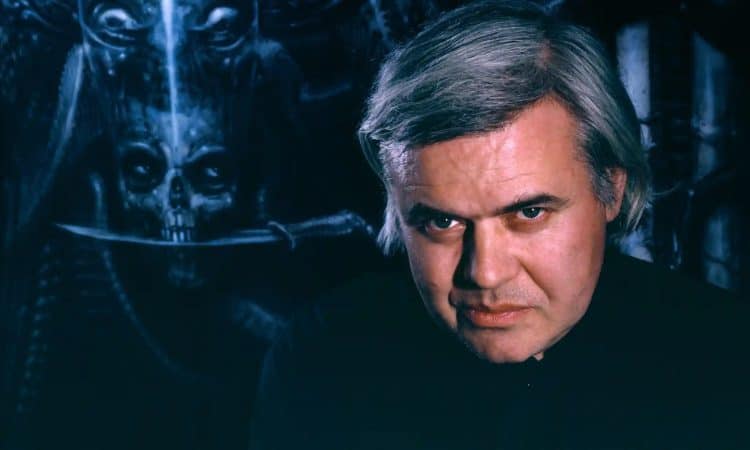A decade has passed since his passing in 2014, yet the haunting influence of H.R. Giger’s eerie art continues to resonate in contemporary film and art. The Swiss surrealist who is hailed as the creator of Xenomorphs is no ordinary artist, however. Here, we will uncover 10 chilling facts about the man behind these unsettling masterpieces, from his fascination with biomechanical visions to crafting the iconic creatures from 1979’s Alien.
Who Was HR Giger?
Most famously known for his work on the Alien franchise, Hans Ruedi Giger (H R Giger) was a Swiss surrealist painter who was the forefather of modern biomechanical art.
Born on the 5th of February, 1940, in Chur, Switzerland, Giger grew up during World War II. Living near Nazi Germany at the time, Giger shared that his childhood was filled with anxiety. In an interview with Vice in 2011, the Academy Award winner shared that he remembers how his family lived while the threat of atomic warfare loomed over them. “I could feel the atmosphere when my parents were afraid. The lamps were always a bluish dark so the planes wouldn’t bomb us.”
Even without the atomic threat, his family home fuelled his anxiety. Scholar Andreas J. Hirsch shared that “[He] recalled open windows that went to dark alleys, the cellars of that old building that sparked fear in him very early on. Those fears were matched with an early fascination that those things had for him.”
H R Giger had always had a fascination for combining horror and the grotesque. His first exhibition was in 1967 and was called Power of Masks. It was held at Galerie Obere Zaune in Switzerland and exhibited his paintings and sculptures. It wasn’t too long before he gained the attention of Salvador Dalí –who showed his work to a Chilean director, Alejandro Jodorowsky, who enlisted Giger’s help to design the concept art for his ambitious adaptation of Frank Herbert’s classic science fiction novel Dune (1965). Unfortunately, this project never saw fruition.
1. His Night Terrors and Fears Inspired His Early Work
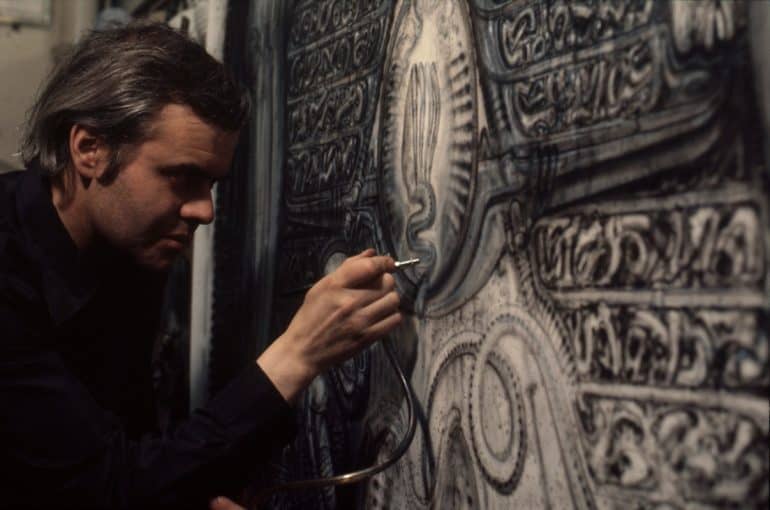
H R Giger started drawing as a young boy, drawing inspiration from his childhood fears. He used art as a way to channel his fright from recurring nightmares and strange dreams. He also sported an early fascination with skulls, death, and mummies “and things like that,” he shared in 2009.
Giger often suffered from night terrors in his childhood, such as visions that he attributed to birth trauma – saying that he could subconsciously remember the trauma of being born. He reported that he would have nightmares, clear memories of a difficult birth, and having to be pulled out with forceps. These visions would manifest as dreams of trying to escape a cramped room with a tunnel-like opening and that he could neither leave nor get back into the room. It is thought that this is why much of H R Giger’s art has malformed babies in it and depicts passageways to try and work through his claustrophobia.
Giger scholar Andreas L. Hirsch curated the 2011 show H.R.Giger Traume und Visionen (translates to Dreams and Visions) at the Kunst Haus Wien in Vienna, became friends with him after curating the exhibition and said this of the artist’s relationship with his fears:
“He repeatedly spoke about that. He addressed his personal fears and collective fears,” Hirsch continued. “He reacted to them by creating visions that sort of transformed those fears – not to a happy ending, but in an artistic way that he could handle.”
2. H R Giger’s Art Explores The Theme of Psycho-Sexual Biomechanics
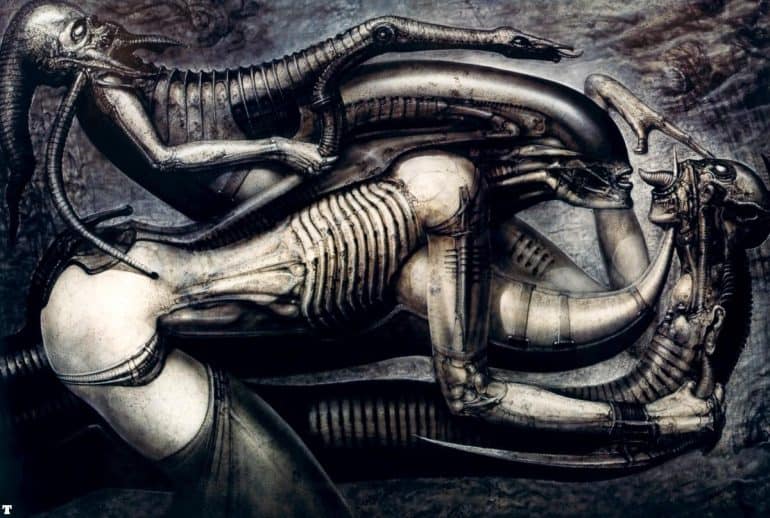
H R Giger’s art has always inspired fear and awe and taps into the unending human fascination with the things that frighten us the most. From his first exhibition, his work had a plethora of quasi-sexual imagery that appalled most audiences in the beginning. Sexuality and fear have always had an intrinsic connection and allure, and this is emphasized by the wild popularity of Giger’s disturbing and twisted sexual imagery where flesh meets machine.
Giger described his work as biomechanical and polarized and reshaped the biomechanical art aesthetic from then on, having most biomechanical works and tattoos to this day based on his masterpieces.
From wanting to understand his dreams and inspirations, H R Giger did a lot of research into Sigmund Freud’s concept of psycho-sexual development, as well as Carl Jung’s concept of the collective unconscious and the individual unconscious mind. These concepts then heavily influenced his further works, and a vaguely sexual theme can be seen throughout his work.
To his detriment, the quasi-sexual nature of much of his work was ridiculed at the start of his career when he first started to display his work. However, it was quickly realised that his art was simply not for mainstream audiences, as those who enjoy his art truly and fully adore it.
3. H R Giger Initially Studied Architecture and Industrial Design
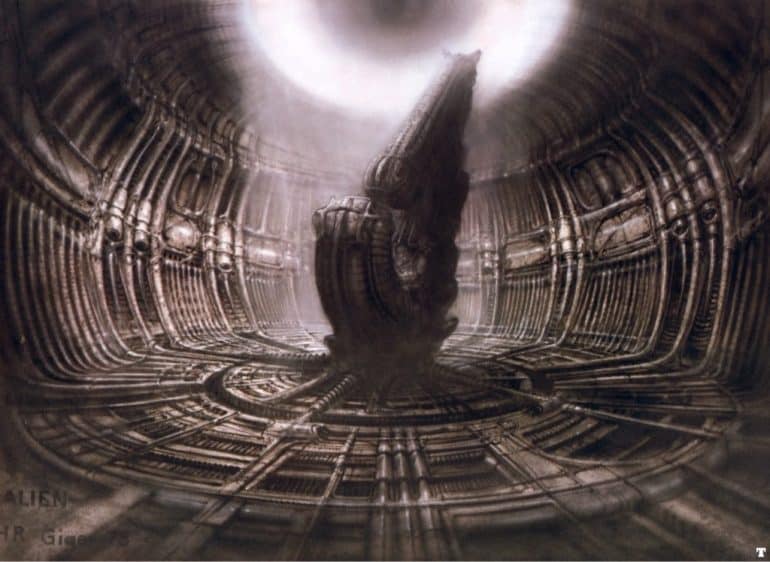
Giger’s father, Hans Richard Giger, wanted his son to follow in his footsteps and become a pharmacist to take over the family business. His mother, Melly Giger-Meier, had always supported his artistic side, buying him clay and modelling tools. Going against his father’s wishes, Giger studied interior design, architecture, and industrial design at the School of Applied Arts in Zurich, where he graduated in the mid-1960s. It was his education and experience in this field that allowed him to later create the interior design marvels that he did.
After graduating, he went to work as an interior designer but soon decided to pursue his passion for art and visual arts full-time. It was during this time of development that H R Giger made the move from sketching to ink drawings to oil paintings and then finally to working with an airbrush to create his art.
While the fact that he studied something as mundane as interior design might not be particularly nightmarish, the fact that if he had followed his father’s wishes, the world might never have seen the incredible work of H.R. Giger.
4. His First Love Took Her Own Life
When Giger first struck out on his own, he moved in with a dear friend and girlfriend. The dear friend had to go abroad, leaving Giger and the girlfriend to fend for themselves, and their friendship quickly blossomed into a relationship, and she became the muse for much of his art. This was the young Swiss actress Li Tobler.
The two were together on and off for about 9 years, but the financial difficulties of an upstart actress and a young artist got to the couple. Tobler, unfortunately, fell into the habit of using drugs and sex to distract her from her situation, and toward the end, took her own life by shooting herself in the head.
H R Giger was blamed by many people for not taking care of her and her mental state. His art took on a darker tone after her death, and Tobler’s likeness can still be seen in many of his artworks.
A few years after losing his first love, H R Giger married his first wife, Mia Bonzanigo, in 1979. This was coincidentally the year that the first Alien movie was released. Unfortunately, their relationship was not destined to last very long, and the two divorced after a year and a half. It wasn’t until 2006 that Giger fell in love again and married Carmen Maria Scheifele Giger, with whom he worked and lived in Zurich. Carmen Giger is now the director of the H.R. Giger Museum.
5. He Was Fascinated With The Occult
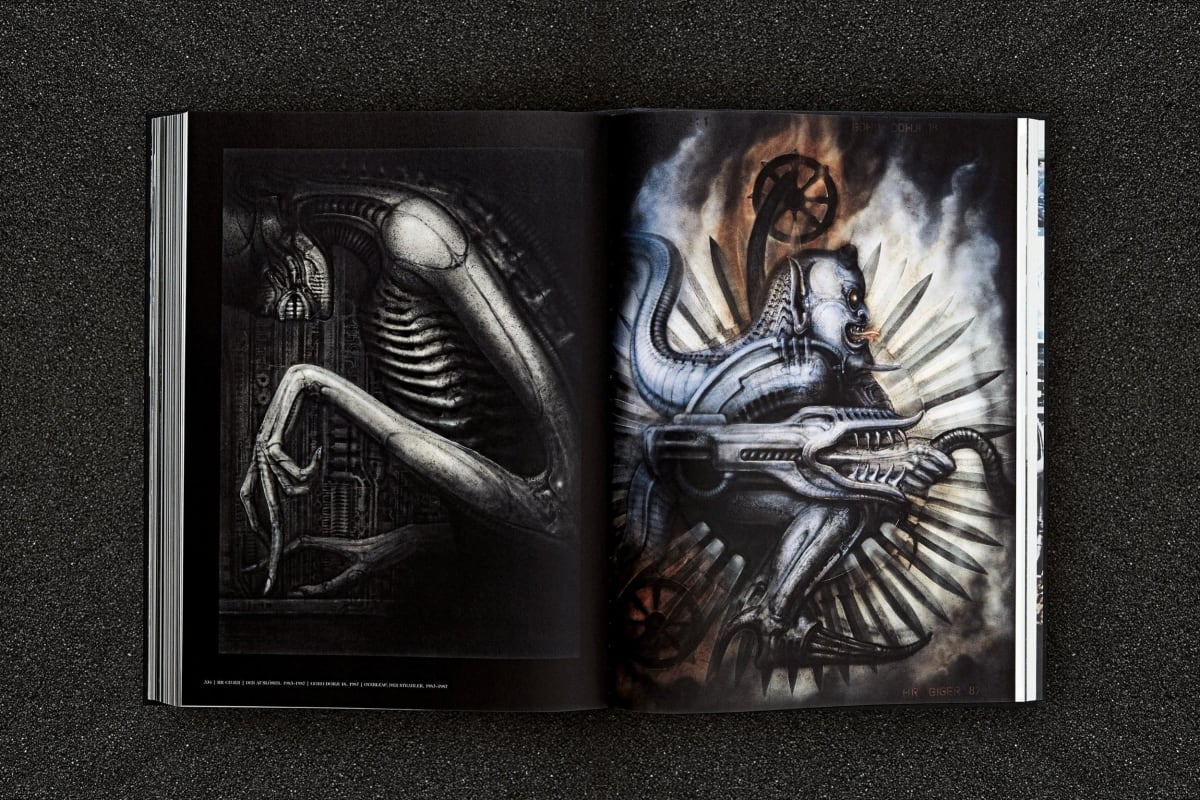
In his young adult years, H R Giger found a dear friend in Sergius Golowin, the writer who worked on the Necronomicon book and was an avid student of all things spiritual and occult. It was through him that Giger’s fascination with the occult began. Although Giger was fascinated with the occult and the supernatural, he was never part of any kind of cult or spiritual group, despite people’s fears.
Giger’s closeness to controversial personalities that were involved in the occult had the public concerned that he was wrapped up in darker practices, but the artist had a strong aversion and paranoia when it came to real-world morbidity, refusing to even watch world war documentaries with footage of real corpses.
After being introduced by his occult-loving friend, H R Giger soon became enamoured with the work of H.P. Lovecraft, whose inspiration and mythos can be seen in his work. Giger curated and published a book of his art called The Necronomicon, named after the book of the same name found throughout Lovecraft’s stories in 1977.
The book was his first major collection of drawings and featured strange mechanical gremlins perched on towering lead pillars, a skeletal alien creature looking out on mist-covered wastelands, and mutilated, fleshy bodies hooked up to hulking machinery, all of which was a balance between ghostly white tones – meant to emulate moonlight on concrete – and dark hues – meant to emulate the deep shades of the abyss. The Necronomicon is thought to be his second most influential artistic achievement.
6. He Created One of The Most Iconic Monstrosities In Movie History
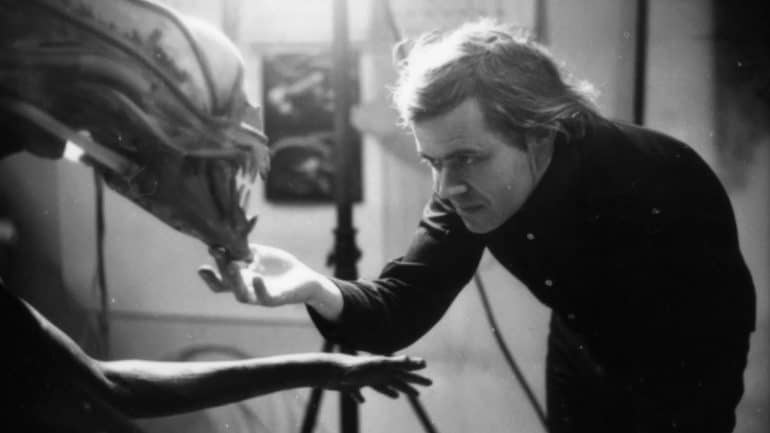
Legendary Director Ridley Scott had just signed on to the task of horror sci-fi film Alien (famously starring Sigourney Weaver) when he found H.R. Giger’s Necronomicon at the production studio. After looking through the images, he knew that he had to have the artist working with him on the movie, which is widely considered his best achievement.
“I took one look at it and I’ve never been so sure of anything in my life. I was convinced I’d have to have him for the film,” Scott told Starlog, a monthly science-fiction magazine, in 1979 (the year the first Alien movie was unveiled).
The iconic Xenomorph, an unrelenting alien species from the Alien franchise, was based on two lithographs from the Necronomicon of a dark, metallic-looking being with an oblong head that has become an iconic characteristic of the monster. This gave birth to the black, egg-shaped head, the dripping stalactite teeth, the sleek, spiky body that was strangely reminiscent of a human but not quite, and the razor-sharp weaponized tail. The Xenomorph (which could now be considered a Disney princess) instantly became a cultural icon that continues to inspire to this day.
H R Giger and his visual effects team won the Academy Award for their art in the Alien film. The Xenomorph has since appeared in eight films, some from the core franchise, some in spin-offs (like Alien vs Predator) and even video games.
7. He Had An Immense Hatred For Hollywood Toward The End Of His Career
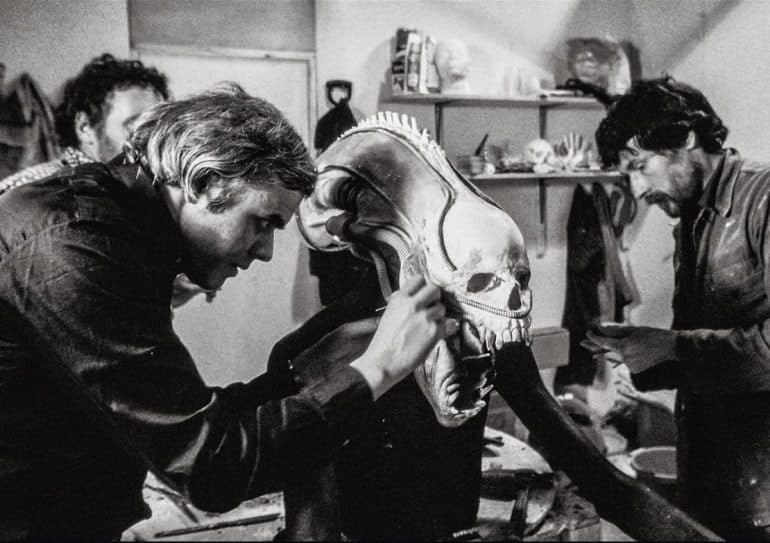
After creating such beautiful pieces of art for Hollywood throughout his life, it is unfortunate that Giger ended up with a seething hatred toward Hollywood, but this seething hatred was not unwarranted.
After the Alien franchise started to succeed, the executives behind the movies began to leave H R Giger off of the credits, an unthinkable slight because even Alien director Ridley Scott had proclaimed that without him, the franchise would never have succeeded the way that it did. He was left off the credits for both the third and fourth movies, after which he wrote a scathing letter to those in charge. It was unacceptable that he was not credited for the inclusion of his work, as his designs were used in every single Alien movie, video game, and comic that has been created, as without his impactful art, there would be no Xenomorph.
Then, when James Cameron took over the franchise, he decided to actively exclude Giger. Cameron later wrote H R Giger an apology letter, admitting that he had essentially been intimidated by his creative legacy and was worried that his ideas would fall to the wayside in the making of the movie.
8. He Contributed Art To Many Movies, Not Just Alien
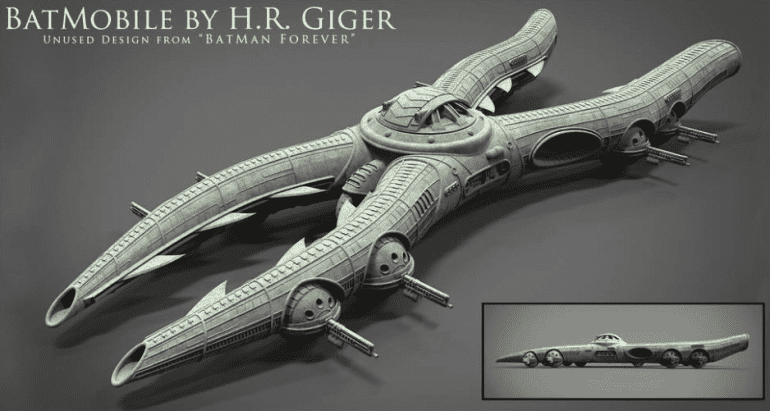
H R Giger was a prolific creator. Once he had skyrocketed to fame, it made it difficult for him to decide which projects he would put his time and effort into, but the world-renowned artist contributed to many films in Hollywood and more.
He did concept art for Future-Kill (1985), Poltergeist II (1986), Tokyo: The Last Megalopolis (1988), Species (1995), Batman Forever (1995), and Species II (1998). One honourable mention is the Dune remake, which was never fully realized.
His work on Batman Forever was to design a Xenomorph-style batmobile for the movie, and he did not disappoint. He created a scissors-like x-shape mobile that could very well have been a spaceship and was years before its time. Unfortunately, the concept was never used.
Much of his work and film designs went unused as they were mostly relegated to concept art, and a lot of the projects that he did work for never got off the ground, so Giger decided to look for alternative ways to showcase his talent and a permanent home for his art.
9. He Designed The H.R. Giger Museum / Castle and The Giger Bar
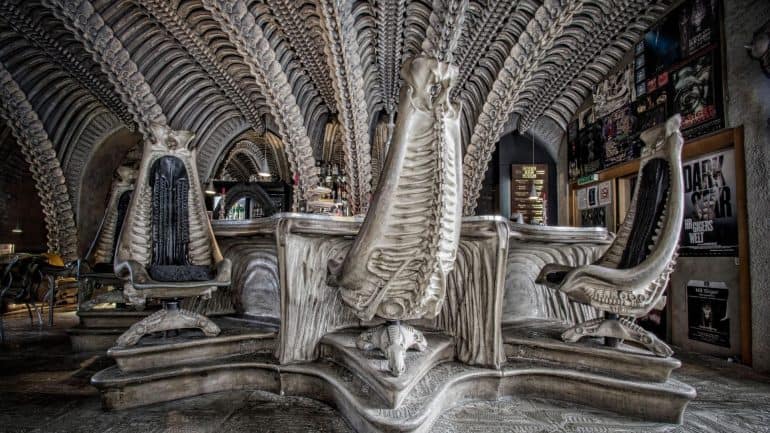
Giger Bars are venues in Switzerland, namely the cities of Chur and Gruyere, where he was fully able to incorporate his art and design skills into even the architecture of the buildings, such as spine-like alien skeletons in the stonework. The tables and counters either look like bone, but if not, Giger found homes for his famous Harkonnen chairs: black, aluminium throne-like chairs that were originally designed for Jodorowsky’s lost Dune film.
It is said that stepping into the bar feels like stepping into the world of the artist’s imagination, and you are immediately transported into a den for one of his terrifying creatures.
A third bar was built in Tokyo, and a “Giger Room” in New York’s now-closed Limelight club, which unfortunately no longer exists, but the other two have been steadfastly preserved.
Later in life, H R Giger relocated from Zurich to a modest castle in Gruyere, St. Germain Castle, where the medieval chateau was partially renovated to house the H.R. Giger Museum. The museum is the largest collection of his works, containing film sets, paintings, sculptures and furnishings. The museum opened on the 21st of June in 1998 and is still visitable to this day. Some of his artworks were lost during the relocation from Zurich to Gruyere and were presumed to be stolen.
“He did not stop creating art – he just turned his attention or his scope of his art to environments, to larger contexts. I think that is one of the closing cycles of the young interior designer finding his way in the art world and later, mature artist, creating the spaces for his creatures to inhabit,” said Hirsch.
10. A Flesh Eating Plant Was Named After Him

Matthew Kaelin, a carnivorous plant breeder, renamed one of his carnivorous pitcher plants after H R Giger following his death in 2014. The plant’s name is Nepenthes H.R. Giger, and it is no wonder that Kaelin chose to rename this one after the iconic artist, as its peristome and spiked teeth resemble something straight out of Giger’s Necronomicon. “I named this plant Nepenthes ‘H.R. Giger’ in October 2014 in memory of the recently passed Surrealist Artist from Switzerland who is perhaps best known for creating the Alien creature for director Ridley Scott’s 1979 film Alien,” Kaelin said.
“When viewed extremely close and at an angle, the intersection of the peristome teeth and the lid spikes of the cultivar create a frightening alien landscape akin to those imagined by the late H.R. Giger. This, and because the plant is darkly coloured and has such a nightmarish appearance, I feel that it would be a fitting tribute to name the cultivar for the late visionary genius Hans Ruedi Giger.”
H.R. Giger passed away in 2014, much to many a fan and faithful fanatic’s despair. He left in his wake a world that was forever changed by his genre-defining work. Few people in this world leave behind a legacy as long and as wonderous as this biomechanical arts master. His Museum and Giger Bars are still open for loyal fans and biomechanical arts students to enjoy to this day.
What are your thoughts on H R Giger’s works and influence on film? Also, read our articles on the 28 best Lovecraftian movies of all time.


